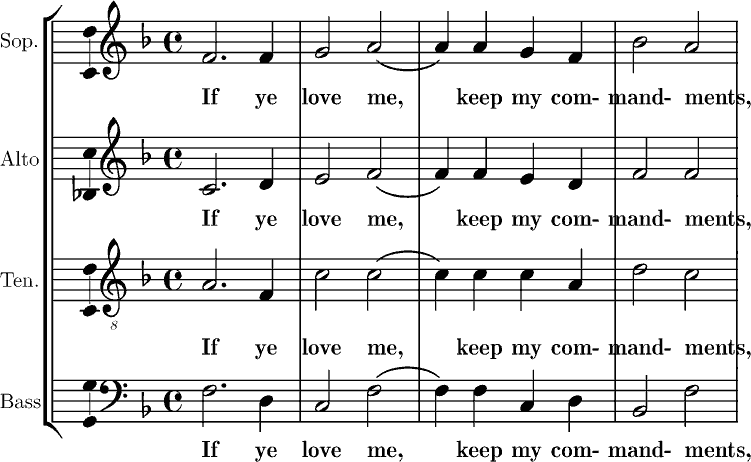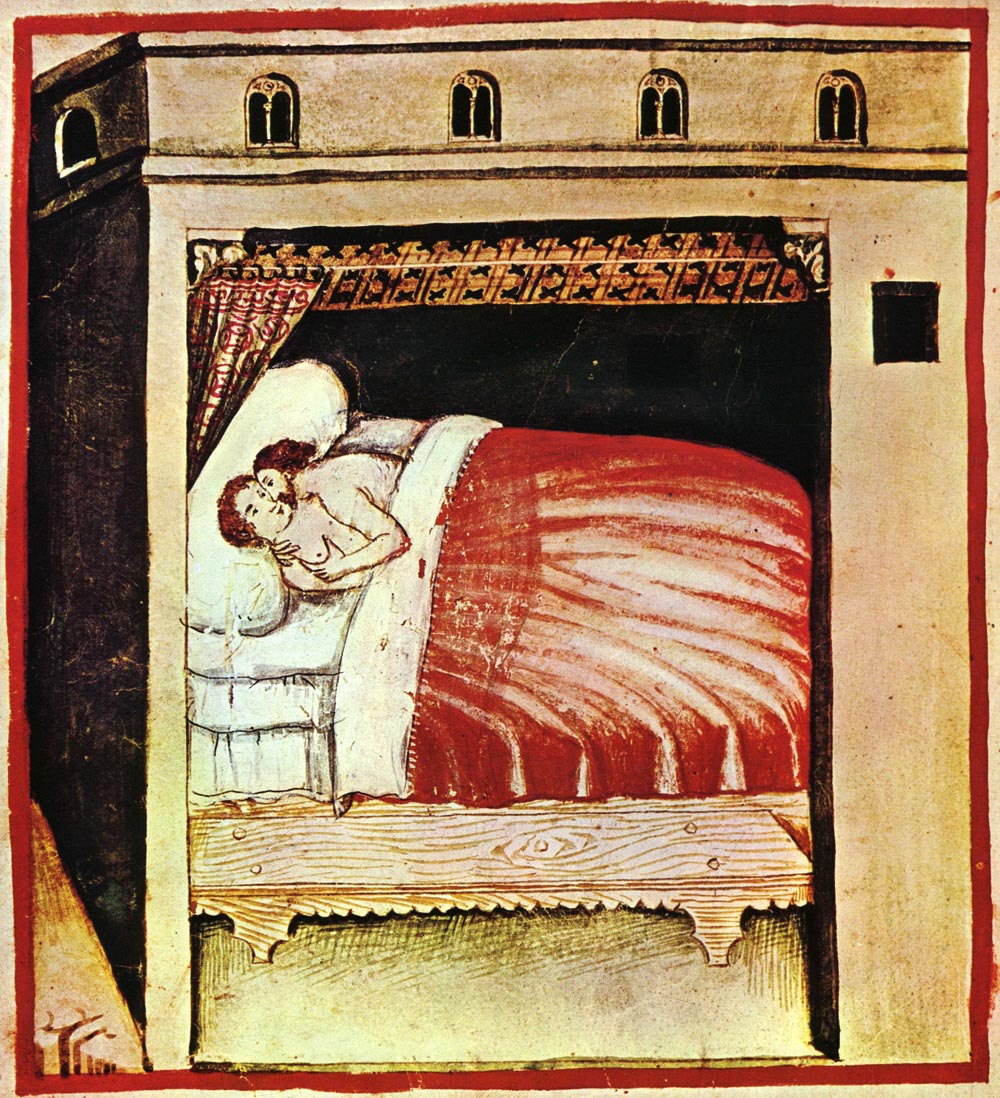|
Romeo And Juliet (Tchaikovsky)
''Romeo and Juliet'', TH 42, ČW 39, is an orchestral work composed by Pyotr Ilyich Tchaikovsky. It is styled an ''Overture-Fantasy'', and is based on Shakespeare's play of the same name. Like other composers such as Berlioz and Prokofiev, Tchaikovsky was deeply inspired by Shakespeare and wrote works based on '' The Tempest'' and ''Hamlet'' as well. Unlike Tchaikovsky's other major compositions, ''Romeo and Juliet'' does not have an opus number. It has been given the alternative catalogue designations TH 42 and ČW 39. Musical structure Although styled an 'Overture-Fantasy' by the composer, the overall design is a symphonic poem in sonata form with an introduction and an epilogue. The work is based on three main strands of the Shakespeare story. The first strand, written in F-sharp minor, following Mily Balakirev's suggestion, is the introduction representing the saintly Friar Laurence. Here there is a foreboding of doom from the lower strings. The Friar Laurence th ... [...More Info...] [...Related Items...] OR: [Wikipedia] [Google] [Baidu] |
Incidental Music
Incidental music is music in a play, television program, radio program, video game, or some other presentation form that is not primarily musical. The term is less frequently applied to film music, with such music being referred to instead as the film score or soundtrack. Incidental music is often background music, and is intended to add atmosphere to the action. It may take the form of something as simple as a low, ominous tone suggesting an impending startling event or to enhance the depiction of a story-advancing sequence. It may also include pieces such as overtures, music played during scene changes, or at the end of an act, immediately preceding an interlude, as was customary with several nineteenth-century plays. It may also be required in plays that have musicians performing on-stage. History The use of incidental music dates back at least as far as Greek drama. A number of classical composers have written incidental music for various plays, with the more fam ... [...More Info...] [...Related Items...] OR: [Wikipedia] [Google] [Baidu] |
Moscow Conservatory
The Moscow Conservatory, also officially Moscow State Tchaikovsky Conservatory (russian: Московская государственная консерватория им. П. И. Чайковского, link=no) is a musical educational institution located in Moscow, Russia. It grants undergraduate and graduate degrees in musical performance and musical research. The conservatory offers various degrees including Bachelor of Music Performance, Master of Music and PhD in research. History It was co-founded in 1866 as the Moscow Imperial Conservatory by Nikolai Rubinstein and Prince Nikolai Troubetzkoy. It is the second oldest conservatory in Russia after the Saint Petersburg Conservatory. Pyotr Ilyich Tchaikovsky was appointed professor of theory and harmony at its opening. Since 1940, the conservatory has borne his name. Choral faculty Prior to the October Revolution, the choral faculty of the conservatory was second to the Moscow Synodal School and Moscow Synodal Choir, ... [...More Info...] [...Related Items...] OR: [Wikipedia] [Google] [Baidu] |
Homophony
In music, homophony (;, Greek: ὁμόφωνος, ''homóphōnos'', from ὁμός, ''homós'', "same" and φωνή, ''phōnē'', "sound, tone") is a texture in which a primary part is supported by one or more additional strands that flesh out the harmony. One melody predominates while the other parts play either single notes or an elaborate accompaniment. This differentiation of roles contrasts with equal-voice polyphony (in which similar lines move with rhythmic and melodic independence to form an even texture) and monophony (in which all parts move in unison or octaves). Historically, homophony and its differentiated roles for parts emerged in tandem with tonality, which gave distinct harmonic functions to the soprano, bass and inner voices. A homophonic texture may be homorhythmic, which means that all parts have the same rhythm. Chorale texture is another variant of homophony. The most common type of homophony is melody-dominated homophony, in which one voice, often t ... [...More Info...] [...Related Items...] OR: [Wikipedia] [Google] [Baidu] |
Crescendo
In music, the dynamics of a piece is the variation in loudness between notes or phrases. Dynamics are indicated by specific musical notation, often in some detail. However, dynamics markings still require interpretation by the performer depending on the musical context: for instance, the ''forte'' marking (meaning loud) in one part of a piece might have quite different objective loudness in another piece or even a different section of the same piece. The execution of dynamics also extends beyond loudness to include changes in timbre and sometimes tempo rubato. Purpose and interpretation Dynamics are one of the expressive elements of music. Used effectively, dynamics help musicians sustain variety and interest in a musical performance, and communicate a particular emotional state or feeling. Dynamic markings are always relative. never indicates a precise level of loudness; it merely indicates that music in a passage so marked should be considerably quieter than . There are ... [...More Info...] [...Related Items...] OR: [Wikipedia] [Google] [Baidu] |
Tuba
The tuba (; ) is the lowest-pitched musical instrument in the brass instrument, brass family. As with all brass instruments, the sound is produced by lip vibrationa buzzinto a mouthpiece (brass), mouthpiece. It first appeared in the mid-19th century, making it one of the newer instruments in the modern orchestra and concert band. The tuba largely replaced the ophicleide. ''Tuba'' is Latin for "trumpet". A person who plays the tuba is called a tubaist, a tubist, or simply a tuba player. In a British Brass band (British style), brass band or military band, they are known as bass players. History Prussian Patent No. 19 was granted to Wilhelm Friedrich Wieprecht and Johann Gottfried Moritz (1777–1840) on September 12, 1835 for a "bass tuba" in F1. The original Wieprecht and Moritz instrument used five valves of the Brass instrument valve#Double-piston valve, Berlinerpumpen type that were the forerunners of the modern piston valve. The first tenor tuba was invented in 1838 ... [...More Info...] [...Related Items...] OR: [Wikipedia] [Google] [Baidu] |
Triplet (music)
In music, a tuplet (also irrational rhythm or groupings, artificial division or groupings, abnormal divisions, irregular rhythm, gruppetto, extra-metric groupings, or, rarely, contrametric rhythm) is "any rhythm that involves dividing the beat into a different number of equal subdivisions from that usually permitted by the time-signature (e.g., triplets, duplets, etc.)" This is indicated by a number, or sometimes two indicating the fraction involved. The notes involved are also often grouped with a bracket or (in older notation) a slur. The most common type of tuplet is the triplet. Terminology The modern term 'tuplet' comes from a rebracketing of compound words like quintu(s)-(u)plet and sextu(s)-(u)plet, and from related mathematical terms such as " tuple", "-uplet" and "-plet", which are used to form terms denoting multiplets (''Oxford English Dictionary'', entries "multiplet", "-plet, ''comb. form''", "-let, ''suffix''", and "-et, ''suffix''1"). An alternative modern t ... [...More Info...] [...Related Items...] OR: [Wikipedia] [Google] [Baidu] |
Timpani
Timpani (; ) or kettledrums (also informally called timps) are musical instruments in the percussion family. A type of drum categorised as a hemispherical drum, they consist of a membrane called a head stretched over a large bowl traditionally made of copper. Thus timpani are an example of kettle drums, also known as vessel drums and semispherical drums, whose body is similar to a section of a sphere whose cut conforms the head. Most modern timpani are ''pedal timpani'' and can be tuned quickly and accurately to specific pitches by skilled players through the use of a movable foot-pedal. They are played by striking the head with a specialized drum stick called a ''timpani stick'' or ''timpani mallet''. Timpani evolved from military drums to become a staple of the classical orchestra by the last third of the 18th century. Today, they are used in many types of ensembles, including concert bands, marching bands, orchestras, and even in some rock bands. ''Timpani'' is an ... [...More Info...] [...Related Items...] OR: [Wikipedia] [Google] [Baidu] |
B Major
B major (or the key of B) is a major scale based on B. The pitches B, C, D, E, F, G, and A are all part of the B major scale. Its key signature has five sharps. Its relative minor is G-sharp minor, its parallel minor is B minor, and its enharmonic equivalent is C-flat major. The B major scale is: Although B major is usually considered a remote key (due to its distance from C major in the circle of fifths and fairly large number of sharps), Frédéric Chopin regarded its scale as the easiest of all to play on the piano, as its black notes fit the natural positions of the fingers well; as a consequence he often assigned it first to beginning piano students, leaving the scale of C major until last because he considered it the hardest of all scales to play completely evenly (because of its complete lack of black notes). Few large-scale works in B major exist: these include Haydn's Symphony No. 46. The aria " La donna è mobile" from Verdi's opera ''Rigoletto'' is i ... [...More Info...] [...Related Items...] OR: [Wikipedia] [Google] [Baidu] |
Cymbal
A cymbal is a common percussion instrument. Often used in pairs, cymbals consist of thin, normally round plates of various alloys. The majority of cymbals are of indefinite pitch, although small disc-shaped cymbals based on ancient designs sound a definite note (such as crotales). Cymbals are used in many ensembles ranging from the orchestra, percussion ensembles, jazz bands, heavy metal bands, and marching groups. Drum kits usually incorporate at least a crash, ride, or crash/ride, and a pair of hi-hat cymbals. A player of cymbals is known as a cymbalist. Etymology and names The word cymbal is derived from the Latin ''cymbalum'', which is the latinisation of the Greek word ''kymbalon'', "cymbal", which in turn derives from ''kymbē'', "cup, bowl". In orchestral scores, cymbals may be indicated by the French ''cymbales''; German ''Becken'', ''Schellbecken'', ''Teller'', or ''Tschinellen''; Italian ''piatti'' or ''cinelli''; and Spanish ''platillos''. Many of th ... [...More Info...] [...Related Items...] OR: [Wikipedia] [Google] [Baidu] |
Consummated
In many traditions and statutes of civil or religious law, the consummation of a marriage, often called simply ''consummation'', is the first (or first officially credited) act of sexual intercourse between two people, following their marriage to each other. The definition of consummation usually refers to penile-vaginal sexual penetration, but some religious doctrines hold that there is an additional requirement that no contraception must be used. The religious, cultural, or legal significance of consummation may arise from theories of marriage as having the purpose of producing legally recognized descendants of the partners, or of providing sanction to their sexual acts together, or both, and its absence may amount to treating a marriage ''ceremony'' as falling short of ''completing'' the state of being married, or as creating a marriage which may later be repudiated. Thus in some legal systems a marriage may be annulled if it has not been consummated. Consummation is also rele ... [...More Info...] [...Related Items...] OR: [Wikipedia] [Google] [Baidu] |




